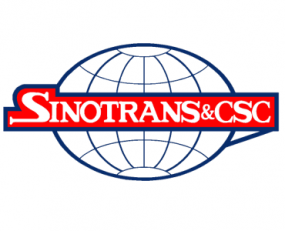
2016 was a relatively good year for Sinotrans, with revenues and net income rising 2.6% and 6.3% to CNY46.7bn and CNY2bn, respectively, although total comprehensive income – which includes items that may be subsequently reclassified to profit or loss – fell to CNY1.7bn from CNY2.1bn one year earlier.
Its core freight forwarding activities turned over CNY35.1bn, and were essentially flat year-on-year. They were followed by logistics, with CNY7.9bn of sales, while storage and terminal services as well as other activities generated about CNY4.4bn of sales on an aggregate basis.
Despite a drop in operating income (EBIT) due to soaring operating costs, such as staff and office costs as well as other items, earnings per share rose 9.3% to CNY0.35 from CNY0.32 one year earlier.
EBIT came in at CNY1.57bn, marginally lower than the CNY1.64bn it posted one year earlier.
That was hardly surprising, as staff costs – the heaviest operating expense at group level – increased by 5.8% to CNY3.5bn from CNY3.3bn in 2015. This rise was “mainly attributable to the increase in salaries and remuneration, as well as the rigid increase in social insurance expenses”, the group said, and normally indicates a performance above management expectations as bonuses have kicked in.
A stable gross profit margin was not harmed by higher transportation and related charges, up 2.5% to CNY40.6bn, because revenue growth fully offset the rise in costs of goods sold.
China’s largest state-owned logistics services provider carefully managed its core cash flows – one reason being that it was under more pressure to do so than in 2015. In fact, it saw net cash generated from operations plunge to CNY1.7bn from CNY2.4bn one year earlier, but its gross cash pile rose because cash outlays from financing and investments were significantly lower in 2016 than in 2015, leading to a rising cash and cash equivalents position of CNY7.1bn on 31 December.
Its non-current assets base was virtually unchanged on a comparable basis, but current assets rose significantly, led by higher cash and cash equivalents, among other things. Non-current liabilities, meanwhile, surged to CNY5bn from CNY1.5bn in 2015, with the book value of long-term bonds standing at CNY3.5bn versus CNY996m one year earlier. That said, current liabilities dropped by about CNY2.5bn, mainly due to short-term bonds declining to zero from CNY2bn in 2015.
At the board meeting held on 21 March, the directors proposed a final dividend of CNY0.075 per ordinary share, totalling CNY345m.
The company became a subsidiary of state-owned port operator China Merchants in 2016.
Source: Transport Intelligence, March 28, 2017
Author: Alessandro Pasetti